 "ttyymmnn" (ttyymmnn)
"ttyymmnn" (ttyymmnn)
07/22/2016 at 12:35 • Filed to: planelopnik, planelopnik history
 6
6
 23
23
 "ttyymmnn" (ttyymmnn)
"ttyymmnn" (ttyymmnn)
07/22/2016 at 12:35 • Filed to: planelopnik, planelopnik history |  6 6
|  23 23 |
Welcome to This Date in Aviation History , getting of you caught up on milestones, important historical events and people in aviation from July 20 - July 22.
!!! UNKNOWN CONTENT TYPE !!!
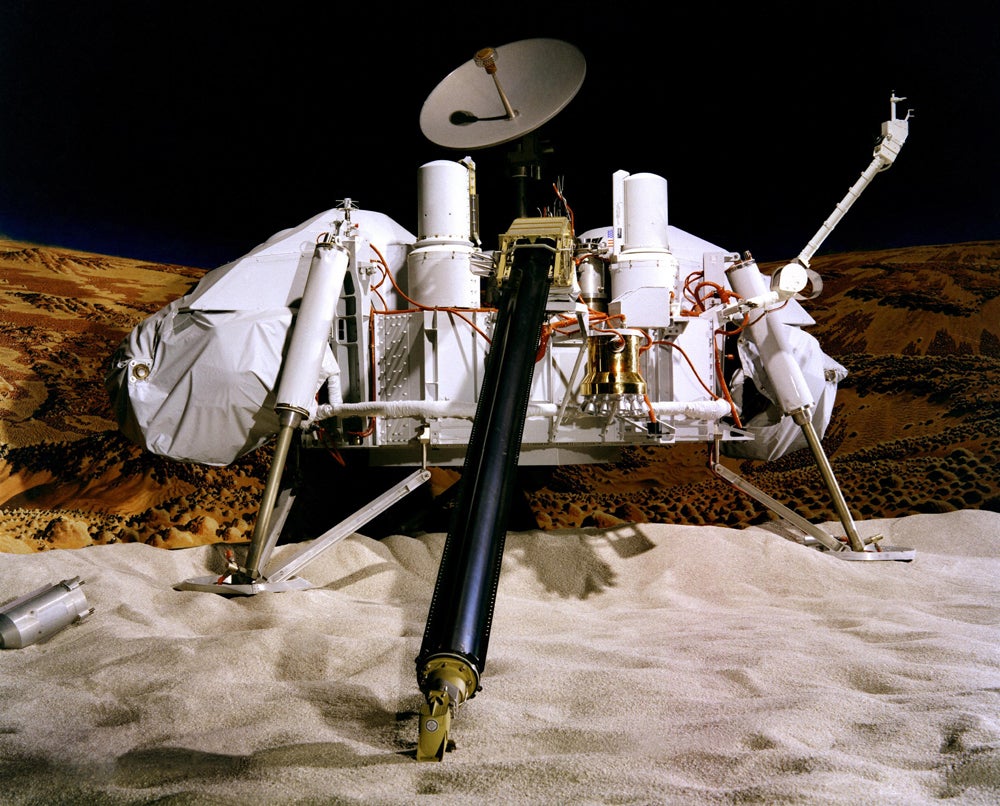
July 20, 1976 – Viking 1 lands on Mars. By the late 19th century, theories about Mars, particularly about whether or not there was life on the Red Planet, were at a fever pitch. Astronomers made detailed maps of the planet based on their observations through telescopes, and some determined that the features they were seeing were undoubtedly canals built for transportation by Martian inhabitants. !!!error: Indecipherable SUB-paragraph formatting!!! wrote one of the great seminal works of science fiction when he published The War of the Worlds in 1898, chronicling the harrowing tale of a Martian invasion of Earth. But looking at a distant world through a telescope only gave scientists so much information. Ultimately, there is no substitution for actually going to the planet and making firsthand scientific observations. Spurred on by the !!!error: Indecipherable SUB-paragraph formatting!!! , the Soviets launched the first of a series of probes to Mars in 1960, though it was not until 1965 that NASA’s !!!error: Indecipherable SUB-paragraph formatting!!! performed the first successful fly-by of the planet. Six years later, !!!error: Indecipherable SUB-paragraph formatting!!! became the first space probe to orbit another planet when it circled Mars and returned the first pictures of the Martian surface. The Russians were the first to put a spacecraft on the planet, but problems with the landers meant that no useful data was returned. NASA’s efforts to put a lander on Mars began with the !!!error: Indecipherable SUB-paragraph formatting!!! , which planned to use rockets and landers based on those used in the !!!error: Indecipherable SUB-paragraph formatting!!! . Though that initiative was canceled in 1968, the impetus to go to Mars remained, and the project became known as Viking, a much less complex—and less expensive—alternative. For Viking, NASA launched two probes, Viking 1 and Viking 2. Each spacecraft was composed of two parts, the Orbiter and the Lander. While the Orbiter carried the Lander, it also had its own important functions in the mission. It made scientific observations of the Martian surface with its cameras, looked for water vapor with its infrared spectrometer, and created a thermal map of the surface with its infrared radiometer. The Orbiter also served as a communication relay between the Lander and Earth. The second part, the Lander, was a three-legged assemblage of instruments that descended under the protection of a heat shield and was then slowed by parachutes before touching down on Mars. Viking 1 was launched from Cape Canaveral, Florida on August 20, 1975 atop a !!!error: Indecipherable SUB-paragraph formatting!!! rocket and, after a 10-month journey, began orbiting Mars on June 19, 1976. Viking 1's sister ship, Viking 2, launched a month later. After Viking 1 reached Mars, it spent its first month in orbit making observations and selecting a safe spot for the Lander to touch down. Then, on July 20, the Lander separated from the Orbiter and touched down on a smooth Martian plain known as !!!error: Indecipherable SUB-paragraph formatting!!! (Golden Plain).
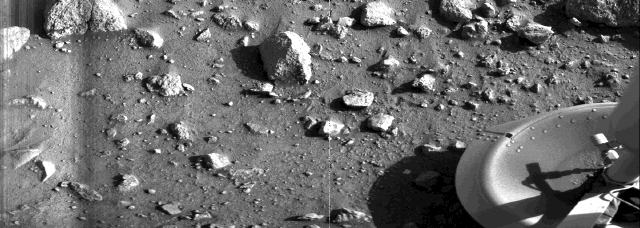
The first clear photo ever taken from the surface of Mars
Viking 1 didn’t find any signs of technologically advanced cultures planning to invade the Earth, nor any signs of life at all. However, the first clear photos ever taken from the Martian surface showed geological forms such as valleys and erosional features on volcanoes that indicated the presence of large amounts of water at one time in Mars’ history. This discovery fundamentally changed scientists’ theories about the history of Mars, and influenced future missions in the search for water in the form of liquid or ice. The Viking 1 Orbiter powered down on August 7, 1980 after 1,489 orbits of Mars, and the Lander made its final transmission to Earth on November 11, 1982. Its 2,307 days of service set a record for surface duration that was only broken by the rover
!!!error: Indecipherable SUB-paragraph formatting!!!
in 2010.
(NASA images)
!!! UNKNOWN CONTENT TYPE !!!

July 20, 1951 – The first flight of the Hawker Hunter. It is difficult to understate the importance of the transitional period of WWII, as the aviation world moved from the piston engine to the jet engine. This fundamental change in aviation power not only brought with it new realms of speed, it also brought about significant changes in airplane design, particularly the use of swept wings. Though the jet engine was a product of technological advances during the war, the idea of sweeping the wings dates back to the earliest days of aviation, and significant theoretical work was done in the 1930s by !!!error: Indecipherable SUB-paragraph formatting!!! . Despite this, the first operational jet-powered aircraft were all straight wing designs, essentially piston aircraft given a new power plant. The British introduced the first Allies’ first (and only) operational jet of WWII with the !!!error: Indecipherable SUB-paragraph formatting!!! in 1944, and Hawker followed in 1947 with the !!!error: Indecipherable SUB-paragraph formatting!!! , which was essentially a jet-powered development of earlier piston-powered designs. In 1946, the British Air Ministry issued specification 38/46 which called for an investigation into the flight characteristics of a swept wing aircraft at low speeds. Hakwer responded with a swept-wing variant of the Sea Hawk, the !!!error: Indecipherable SUB-paragraph formatting!!! , which had been designed by Hawker’s chief designer !!!error: Indecipherable SUB-paragraph formatting!!! . Only two were built, but development continued with the !!!error: Indecipherable SUB-paragraph formatting!!! , and by now, the characteristic and classic lines of the Hunter were beginning to emerge. Later that year, the British Air Ministry issued a specification for a new daytime, jet-powered interceptor to be powered by the !!!error: Indecipherable SUB-paragraph formatting!!! turbojet, a more compact and more powerful engine that provided as much power as the two !!!error: Indecipherable SUB-paragraph formatting!!! engines used on the Meteor combined. Hawker responded with the P.1067, a graceful, swept-wing design with a nose air intake, but Camm moved the intakes to the wing roots to allow for the installation of a nose-mounted radar.
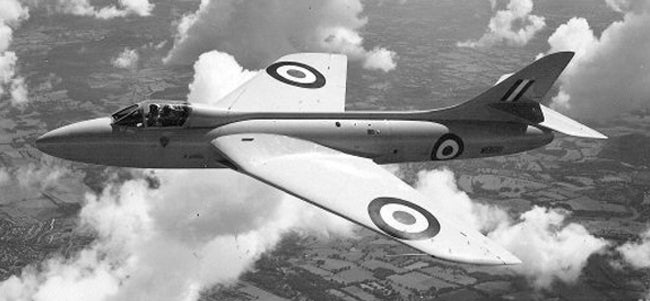
Hawker Hunter prototype
Two prototypes were built, and the Hunter was ordered into production in 1950, the first jet-powered aircraft by Hawker to enter service with the RAF and the first British fighter with truly !!!error: Indecipherable SUB-paragraph formatting!!! performance. Hawker was competing with the !!!error: Indecipherable SUB-paragraph formatting!!! , an aircraft of similar design, but the Hunter proved to have significantly better performance, and was the first RAF aircraft capable of matching the performance of the !!!error: Indecipherable SUB-paragraph formatting!!! bomber. It was armed with four 30 mm !!!error: Indecipherable SUB-paragraph formatting!!! , could carry 7,400 pounds or ordnance on external hardpoints, and had a top speed of Mach 0.94. The Hunter entered service with the RAF in July 1954, replacing the Meteor, the !!!error: Indecipherable SUB-paragraph formatting!!! and the !!!error: Indecipherable SUB-paragraph formatting!!! , and saw its first action escorting Canberra bombers during the !!!error: Indecipherable SUB-paragraph formatting!!! in 1956. The Hunter also proved popular with flight demonstration squadrons such as the !!!error: Indecipherable SUB-paragraph formatting!!! and the RAF’s !!!error: Indecipherable SUB-paragraph formatting!!! , which set a world record by performing a loop with 22 Hunters in formation. With the introduction of the supersonic !!!error: Indecipherable SUB-paragraph formatting!!! in 1959, the Hunter’s role changed from interceptor to ground attack and reconnaissance. Nearly 2,000 Hunters were produced, and roughly half of those were sold to twenty-one export customers around the world. The Hunter served the RAF for over thirty years, and some were flying for international customers as late as 1996. A number of Hunters can still be seen flying the air show circuit in the hands of private collectors. (Photo by Mike Freer via !!!error: Indecipherable SUB-paragraph formatting!!! ; prototype photo author unknown)
!!! UNKNOWN CONTENT TYPE !!!
Short Take Off
!!! UNKNOWN CONTENT TYPE !!!
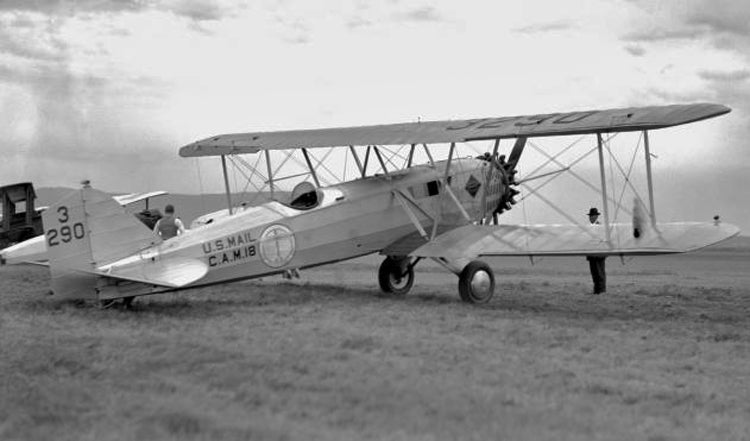
July 20, 1925 – The first flight of the Boeing Model 40, a mailplane developed as part of a requirement by the US Post Office to replace the !!!error: Indecipherable SUB-paragraph formatting!!! . After the Model 40 lost the airmail contract to the !!!error: Indecipherable SUB-paragraph formatting!!! , Boeing revised the design to make use of the !!!error: Indecipherable SUB-paragraph formatting!!! radial engine, which weighed less than the original !!!error: Indecipherable SUB-paragraph formatting!!! V-12 engine that had been stipulated by the Post Office. Boeing also strengthened and lengthened the fuselage to accommodate two passengers, with subsequent models having room four passengers. Thus, the Model 40 became the first passenger airplane to enter production for Boeing, and, in 1927, Boeing Air Transport, the precursor to !!!error: Indecipherable SUB-paragraph formatting!!! , began operations between San Francisco and Chicago. Boeing produced 80 Model 40s, and one remains airworthy today. (Photo author unknown via !!!error: Indecipherable SUB-paragraph formatting!!! )
!!! UNKNOWN CONTENT TYPE !!!
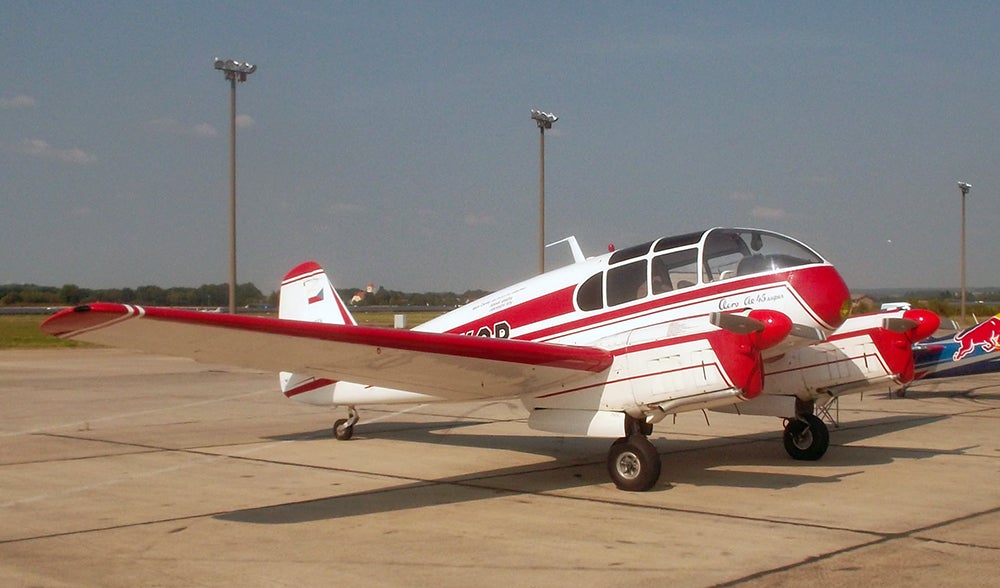
July 21, 1947 – The first flight of the Aero Ae-45, a twin engine civil utility aircraft and the first aircraft to be produced by Czechoslovakia following WWII. The Ae 45 was powered by a pair of !!!error: Indecipherable SUB-paragraph formatting!!! air-cooled 4-cylinder engines, and could carry one pilot with up to four passengers at a cruising speed of 155 mph. The Ae 45 proved to be very popular, and was widely exported to Eastern Bloc countries and allies of the Soviet Union, along with Italy and Switzerland. Nearly 600 were produced from 1951-1963. (Photo by Fiver der Hellseher via !!!error: Indecipherable SUB-paragraph formatting!!! )
!!! UNKNOWN CONTENT TYPE !!!

July 21, 1946 – The first landing by a purely jet-powered aircraft aboard an American aircraft carrier. Though the unfortunately named !!!error: Indecipherable SUB-paragraph formatting!!! mixed propulsion fighter actually made the first jet-powered carrier landing, it did so only because its piston engine had failed. The !!!error: Indecipherable SUB-paragraph formatting!!! , which first flew on January 26, 1945, made the first true jet-powered landing when it touched down aboard the carrier !!!error: Indecipherable SUB-paragraph formatting!!! (CV 42) near Norfolk, Virginia. US Navy fighter squadron !!!error: Indecipherable SUB-paragraph formatting!!! , flying the FH Phantom, became the US Navy’s first operational jet carrier squadron in 1948, flying from !!!error: Indecipherable SUB-paragraph formatting!!! !!!error: Indecipherable SUB-paragraph formatting!!! (CVL 48). (US Navy photo)
!!! UNKNOWN CONTENT TYPE !!!
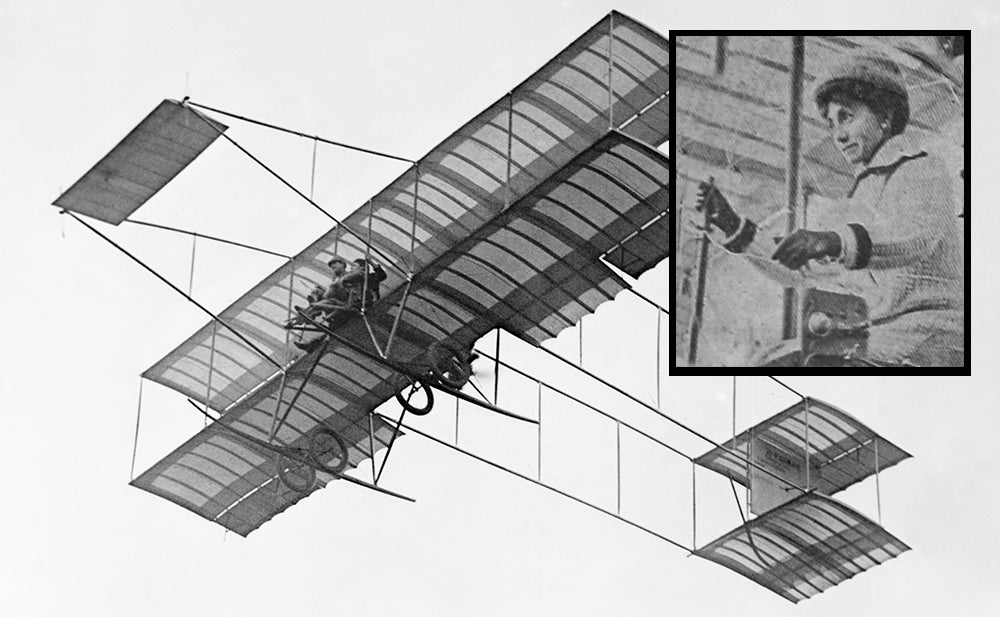
July 21, 1911 – Denise Moore becomes the first woman to die in an airplane crash. Moore’s real name was E. Jane-Wright, but she flew under a pseudonym because flying wasn’t considered a pastime for women and she wanted to conceal her hobby from her family. At the time of her death, Moore was learning to fly at the !!!error: Indecipherable SUB-paragraph formatting!!! aviation school at Étampes, France, and flying one of Farman’s aircraft, most likely a !!!error: Indecipherable SUB-paragraph formatting!!! . At an altitude of 150 feet, Moore lost control of the airplane and fell to her death when the airplane inverted. (Photo authors unknown)
!!! UNKNOWN CONTENT TYPE !!!

July 22, 2011 – The landing of the Space Shuttle Atlantis marks the end of the Space Shuttle Program. The Space Shuttle program was announced during the Nixon Administration as a reusable spacecraft to help reduce the cost of going to space. The first Shuttle, !!!error: Indecipherable SUB-paragraph formatting!!! , was used for atmospheric testing and never went to space. NASA built five operational orbiters, !!!error: Indecipherable SUB-paragraph formatting!!! , !!!error: Indecipherable SUB-paragraph formatting!!! , !!!error: Indecipherable SUB-paragraph formatting!!! , !!!error: Indecipherable SUB-paragraph formatting!!! , and !!!error: Indecipherable SUB-paragraph formatting!!! , and Columbia launched on the first mission to orbit, !!!error: Indecipherable SUB-paragraph formatting!!! , on April 12, 1981. Over the course of 135 missions spanning 30 years, the Shuttle fleet transported over 3.5 million pounds of cargo into space and completed 20,830 orbits. Shuttle astronauts also deployed 180 satellites and components for the construction of the !!!error: Indecipherable SUB-paragraph formatting!!! (ISS). Two Shuttles, Challenger and Columbia , were lost to accidents that claimed the life of 14 astronauts. (NASA photo)
!!! UNKNOWN CONTENT TYPE !!!
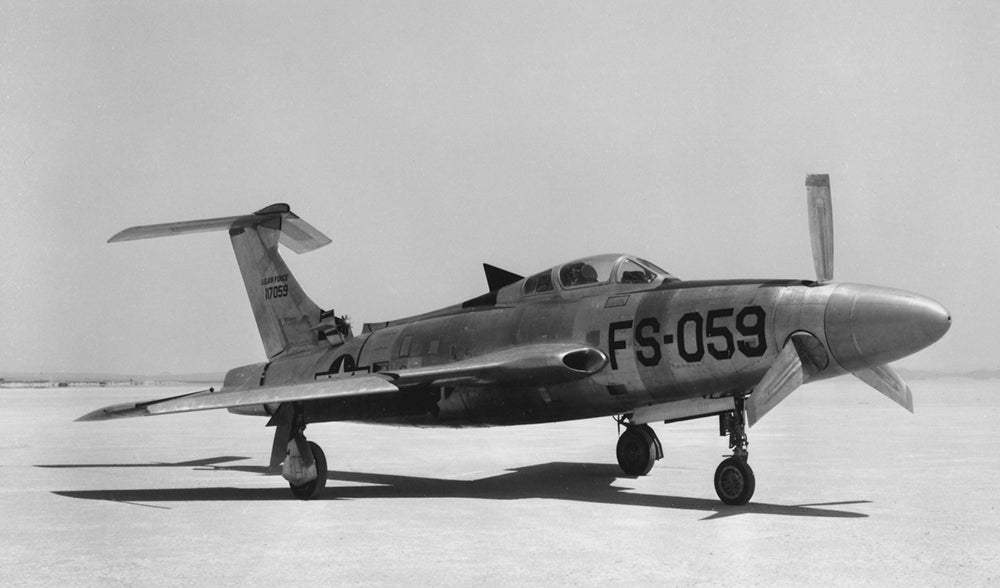
July 22, 1955 – The first flight of the Republic XF-84H “Thunderscreech,” a development of the !!!error: Indecipherable SUB-paragraph formatting!!! to provide the US Navy with a fighter that could take off without a catapult. The F-84H had a 5,850 hp !!!error: Indecipherable SUB-paragraph formatting!!! turboprop located behind the cockpit that turned a propeller by a drive shaft that passed through the cockpit and also provided thrust through its exhaust. While the concept showed unprecedented acceleration, the aircraft took 30 minutes to warm up, and the supersonic propeller, turning at a constant Mach 1.18, caused continuous sonic booms and created a shock wave that caused acute nausea and headaches in the ground crew. The XF-84H was also one of the loudest aircraft ever produced, and its warmup could be heard 25 miles away. The test program was plagued by difficulties with control and engine reliability, and the XF-84 was cancelled in 1956 after the construction of two prototypes. (US Air Force photo)
!!! UNKNOWN CONTENT TYPE !!!
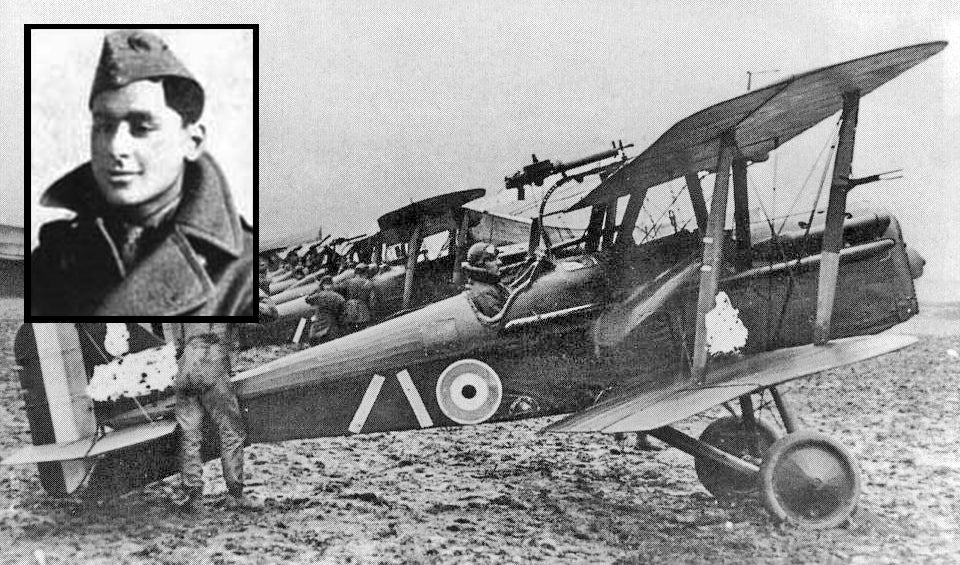
July 22, 1918 – The death of Indra Lal Roy, India’s only WWI flying ace. Roy was attending school in London when the war broke out, and was initially rejected by the Royal Flying Corps for poor eyesight. After getting a second opinion, he was allowed to join. After recovering from injuries suffered in the crash of his !!!error: Indecipherable SUB-paragraph formatting!!! , Roy returned to service and scored 13 victories (2 shared) in just two days. Roy was killed in a dog fight against a !!!error: Indecipherable SUB-paragraph formatting!!! , and was posthumously awarded the United Kingdom’s !!!error: Indecipherable SUB-paragraph formatting!!! , the first Indian to receive the honor. (British Government photo)
!!! UNKNOWN CONTENT TYPE !!!
Recent Aviation History Posts
!!! UNKNOWN CONTENT TYPE !!!
!!! UNKNOWN CONTENT TYPE !!!
!!! UNKNOWN CONTENT TYPE !!!
!!! UNKNOWN CONTENT TYPE !!!
If you enjoy these Aviation History posts, please let me know in the comments. And if you missed any of the past articles, you can find them all at !!!error: Indecipherable SUB-paragraph formatting!!! .
!!! UNKNOWN CONTENT TYPE !!!
 MonkeePuzzle
> ttyymmnn
MonkeePuzzle
> ttyymmnn
07/22/2016 at 12:47 |
|
The Viking 1 Orbiter powered down on August 17, 1980 after 1,485 orbits of Mars, and the Lander was shut down on November 13, 1982.
without the orbiter, how did they continue to talk to the lander and know when it shut down?
 MonkeePuzzle
> ttyymmnn
MonkeePuzzle
> ttyymmnn
07/22/2016 at 12:48 |
|
Its 2,307 days of service set a record for surface duration that was only broken by the rover Opportunity in 2010.
it is one of the favourite things when a space mission gets to do random extra things because the tool lasted far longer than anyone expected. or suddenly came back into contact with earth. that’s just fun
 ttyymmnn
> MonkeePuzzle
ttyymmnn
> MonkeePuzzle
07/22/2016 at 12:49 |
|
Science. Actually, I have no idea. But it's worth checking my dates. I'll get back to you.
 MonkeePuzzle
> ttyymmnn
MonkeePuzzle
> ttyymmnn
07/22/2016 at 12:52 |
|
set a world record by performing a loop with 22 Hunters in formation
WOW!!!
‘tis an ad for some longer film, but has images of their formations, pretty astounding
 ttyymmnn
> MonkeePuzzle
ttyymmnn
> MonkeePuzzle
07/22/2016 at 13:07 |
|
Viking Orbiter 1 began to run short of attitude-control gas in 1978, but through careful planning to conserve the remaining supply, engineers found it possible to continue acquiring science data at a reduced level for another two years. The gas supply was finally exhausted and Viking Orbiter 1's electrical power was commanded off on August 7, 1980, after 1,489 orbits of Mars.
....Lander 1 made its final transmission to Earth Nov. 11, 1982. Controllers at JPL tried unsuccessfully for another six and one-half months to regain contact with Viking Lander 1. The overall mission came to an end May 21, 1983.
http://www.jpl.nasa.gov/news/fact_shee…
I adjusted some of the figures to represent these seemingly official numbers. I’m guessing that the Lander was still able to contact Earth when planetary rotation/orbit put it the Earth side of Mars and signal relay wasn’t required. But that’s only a guess.
 Leon711
> ttyymmnn
Leon711
> ttyymmnn
07/22/2016 at 13:59 |
|
It’s worth noting that the Hawker Hunter is currently grounded in the UK following the events at Shoreham Airshow last year.
 ttyymmnn
> Leon711
ttyymmnn
> Leon711
07/22/2016 at 14:13 |
|
I remember that well. Sad story. Do you know if anything was released about an official investigation? It sounded like pilot error.
 Leon711
> ttyymmnn
Leon711
> ttyymmnn
07/22/2016 at 14:19 |
|
I believe the pilot is facing criminal charges for it. I’m looking into it to write a piece for the anniversary so will have done more research on it soon.
 ttyymmnn
> Leon711
ttyymmnn
> Leon711
07/22/2016 at 14:23 |
|
I look forward to reading it. Thanks.
 MonkeePuzzle
> ttyymmnn
MonkeePuzzle
> ttyymmnn
07/22/2016 at 14:34 |
|
the unfortunately named Ryan FR Fireball mixed propulsion fighter
mixed propulsion, I did not know that was a thing
 MonkeePuzzle
> ttyymmnn
MonkeePuzzle
> ttyymmnn
07/22/2016 at 14:35 |
|
Moore’s real name was E. Jane-Wright
no relation to the wright brothers?
 MonkeePuzzle
> ttyymmnn
MonkeePuzzle
> ttyymmnn
07/22/2016 at 14:36 |
|
The landing of the Space Shuttle Atlantis marks the end of the Space Shuttle Program.
sad, but I think this also has resulted in some rapid progress in the private sector that may not have occurred as quickly otherwise
 MonkeePuzzle
> ttyymmnn
MonkeePuzzle
> ttyymmnn
07/22/2016 at 14:37 |
|
lol, EVERYTHING about the Thunderscreech appeared to be awful. That’s so awesome!
 MonkeePuzzle
> ttyymmnn
MonkeePuzzle
> ttyymmnn
07/22/2016 at 14:39 |
|
very cool, thanks for the added info
 ttyymmnn
> MonkeePuzzle
ttyymmnn
> MonkeePuzzle
07/22/2016 at 14:41 |
|
It's worth reading about it at length. It was one of those hairbrained ideas of the 50s that makes it my all-time favorite era of aviation history. Cold War budgets were basically bottomless, and no idea was too crazy if it could beat the Russkies.
 ttyymmnn
> MonkeePuzzle
ttyymmnn
> MonkeePuzzle
07/22/2016 at 14:43 |
|
I think you are correct. Private companies also have the impetus to do things cheaper.
 ttyymmnn
> MonkeePuzzle
ttyymmnn
> MonkeePuzzle
07/22/2016 at 14:46 |
|
Nope. She was flying in France. Though the Farman III was somewhat influenced by the Wright Flyer, which the Brothers demonstrated in France in 1908.
 ttyymmnn
> MonkeePuzzle
ttyymmnn
> MonkeePuzzle
07/22/2016 at 14:50 |
|
The Navy in particular did not trust the early het engines, considering the need for long flights over water. Their first all-jet aircraft was the Vought Pirate, and it was an absolute dog. There was also the North Anerican AJ Savage, a huge twin engine nuclear capable bomber and the largest of its time to fly from carriers, that also had a turbojet. However, the jet was only used for takeoff and bursts of speed.
 MonkeePuzzle
> ttyymmnn
MonkeePuzzle
> ttyymmnn
07/22/2016 at 14:52 |
|
early hybrids :) just use the fuel hungry jet when needed
the prius of the sky
 MonkeePuzzle
> ttyymmnn
MonkeePuzzle
> ttyymmnn
07/22/2016 at 14:53 |
|
bottomless budgets AND a lot of secrecy and no real public oversight.
 ttyymmnn
> MonkeePuzzle
ttyymmnn
> MonkeePuzzle
07/22/2016 at 14:53 |
|
But without the great mileage. Those early jets had horribly short range.
 You can tell a Finn but you can't tell him much
> ttyymmnn
You can tell a Finn but you can't tell him much
> ttyymmnn
07/25/2016 at 16:16 |
|
the Lander made its final transmutation to Earth

Regarding the Thunderscreech, who OK’ed that idea? In the realm of harebrained ideas that one is definitely hairy. The whole, throw things at the wall and see what sticks era was definitely a great one for aviation though.
 ttyymmnn
> You can tell a Finn but you can't tell him much
ttyymmnn
> You can tell a Finn but you can't tell him much
07/25/2016 at 23:05 |
|
Thanks, autocorrect. That was a late edit, after my final proofread. Thanks for pointing it out.
Yes, the 50s is by far my favorite era of aviation history for precisely the reason you mention. Endless Cold War budgets gave us remarkable aircraft like the SR-71, plus some undoubtedly crazy failures. There is so much computer modeling and fear of failure these days that much of the fun has gone out aviation design.